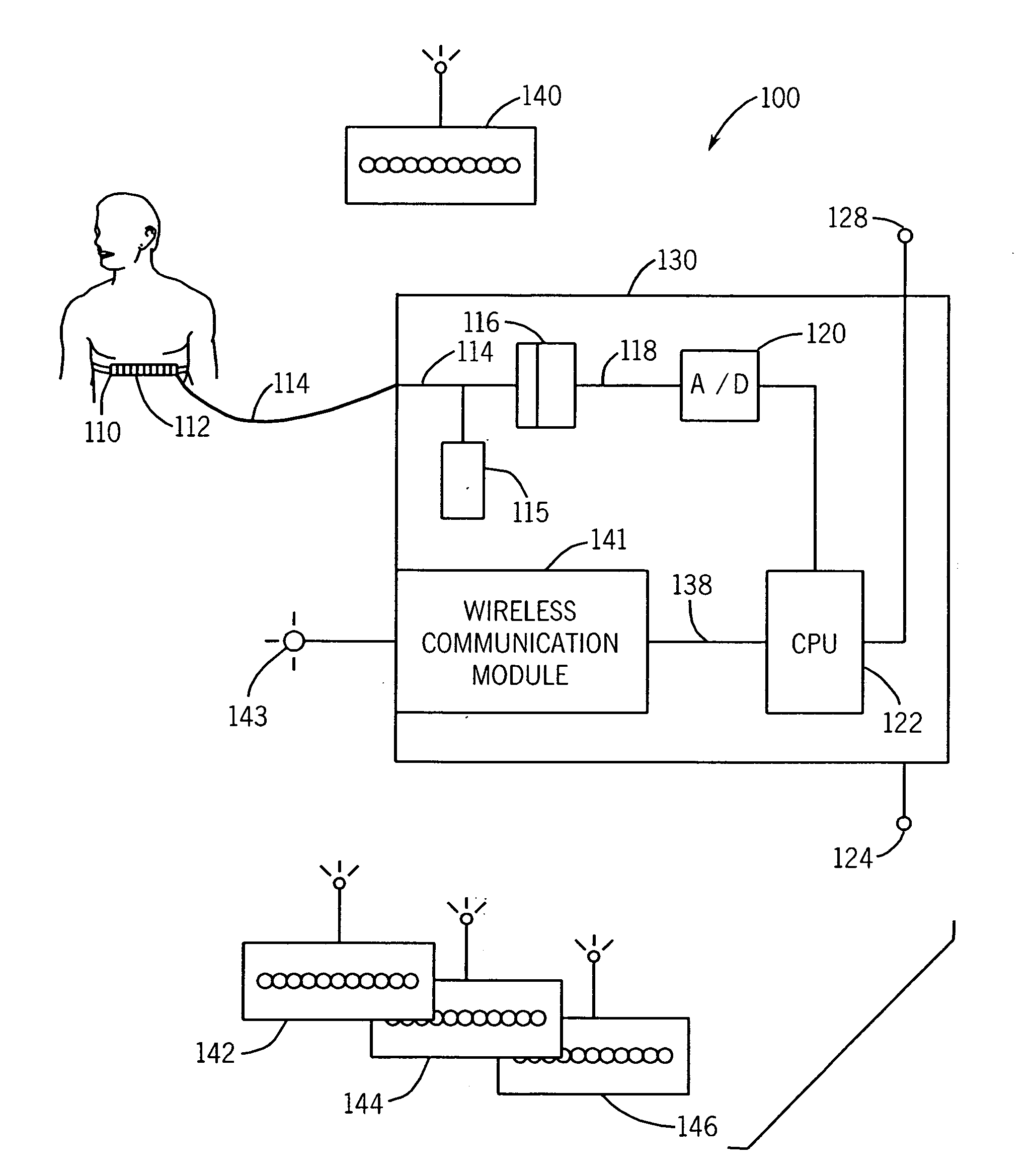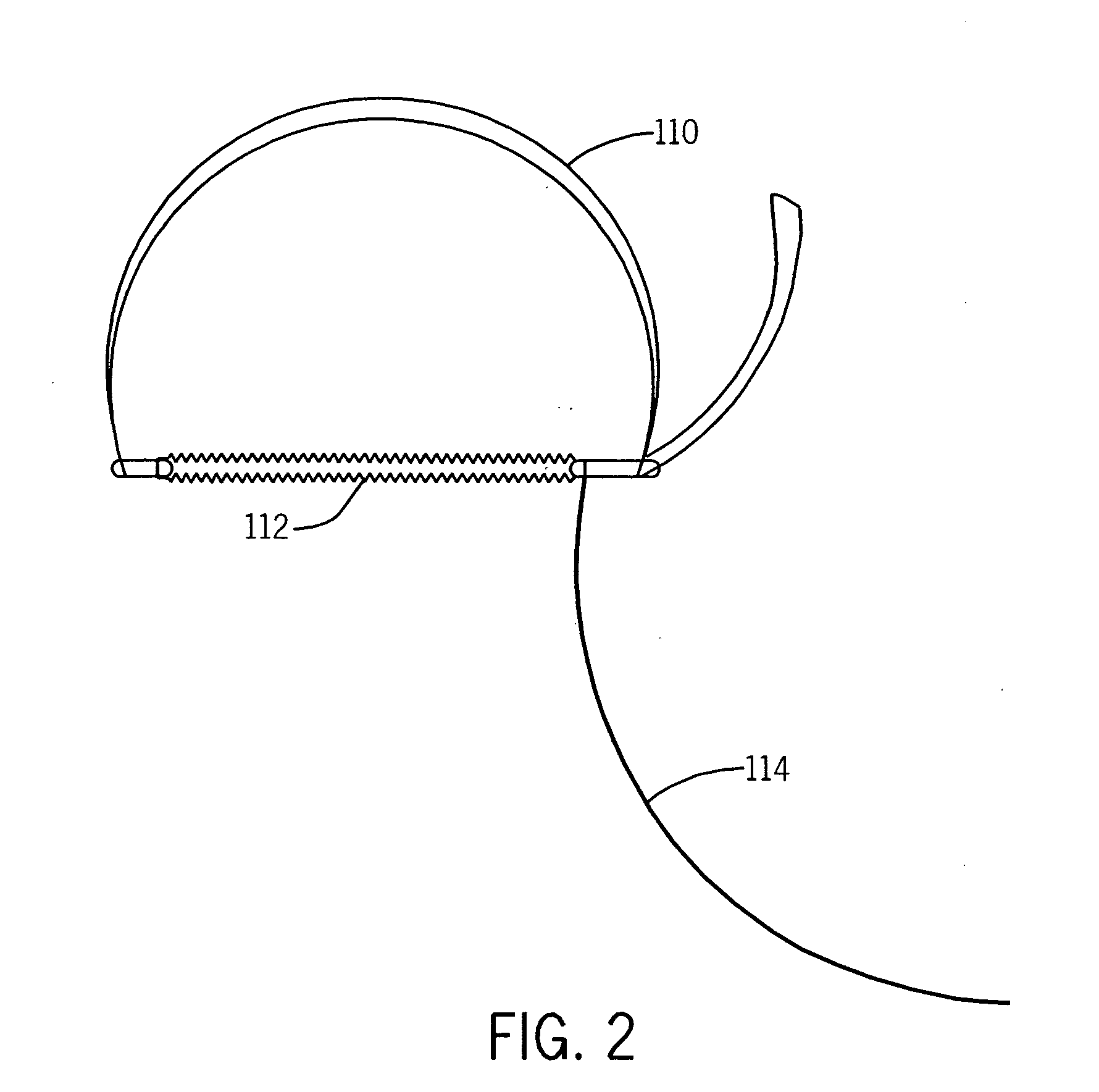Motion monitor system for use with imaging systems
a motion monitor and imaging system technology, applied in the field of medical devices, can solve the problems of difficult continuous ct fluoroscopy, difficult positioning of treatment or biopsy apparatus, and difficult positioning of needles, etc., and achieve the effect of convenient positioning
- Summary
- Abstract
- Description
- Claims
- Application Information
AI Technical Summary
Benefits of technology
Problems solved by technology
Method used
Image
Examples
Embodiment Construction
[0016]Referring to FIGS. 1 and 2, a motion detection and monitor system 100 includes an expandable bellows 112 connected on both ends to a strap or a belt 110. The bellows is a motion detector 112 constructed from flexible rubber, silicone, or other expandable material responsive to expanding and contracting chest motion. The strap 110 may be cloth or leather having Velcro or D-rings or other attachment mechanism to circumscribe the body. A hollow tubing 114 containing a gas, preferably ambient air is connected to the interior of the bellows. Changes in patient girth occurs during respiration and this result in expansion and contraction of the tubing 114. Other motion detectors 112 may also be used such as a strain gauge or piezoelectric fabric.
[0017]The belt 110 is positioned around a patient's upper abdomen or lower chest. When the motion to be detected is the respiratory motion, it is preferable to position the motion detector or bellows 112 on the anterior of the body at a locat...
PUM
 Login to View More
Login to View More Abstract
Description
Claims
Application Information
 Login to View More
Login to View More - R&D
- Intellectual Property
- Life Sciences
- Materials
- Tech Scout
- Unparalleled Data Quality
- Higher Quality Content
- 60% Fewer Hallucinations
Browse by: Latest US Patents, China's latest patents, Technical Efficacy Thesaurus, Application Domain, Technology Topic, Popular Technical Reports.
© 2025 PatSnap. All rights reserved.Legal|Privacy policy|Modern Slavery Act Transparency Statement|Sitemap|About US| Contact US: help@patsnap.com



